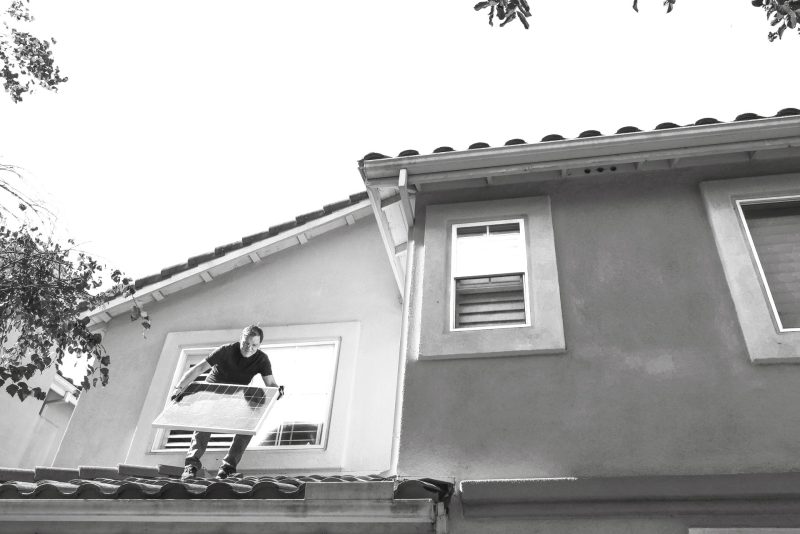As the planet faces unprecedented environmental challenges, there is a growing urgency to transition towards sustainable practices in all aspects of life. One critical area where positive change can be achieved is the construction and design of homes.
The eco-friendly home building offers an excellent opportunity to minimize the environmental impact of housing while creating healthier and more energy-efficient living spaces. This article will explore the opportunities and challenges of eco-friendly home building, exploring its benefits to individuals, communities, and the planet.
Opportunities in eco-friendly home building
Eco-friendly home building, or green or sustainable construction, presents numerous opportunities for various stakeholders. These opportunities span economic, environmental, and social aspects, making it a promising sector in the construction industry.
Here are some of the key opportunities in eco-friendly home building.
Environmental conservation
Eco-friendly home building allows for reduced resource consumption, lower energy use, and minimal waste generation. Eco-friendly home construction focuses on using resources more efficiently. This includes using sustainable building materials with lower environmental footprints and optimizing resources like water and energy throughout the building’s life cycle.
In addition, eco-friendly construction also aims to reduce waste generation during the building process. This can be achieved through better planning before construction, reusing materials, recycling materials, and adopting waste-efficient construction techniques.
These methods will conserve natural resources, reduce greenhouse gas emissions, and mitigate the environmental impact of construction activities.
Lessens environmental impact with sustainable materials
Using sustainable and renewable building materials, like bamboo, recycled metal, and reclaimed wood, reduces the environmental footprint of construction projects and supports the growth of eco-friendly material suppliers.
Using bamboo and reclaimed wood can put less pressure on forests and a decreased need for cutting down new trees. It also adds character and uniqueness to the construction project. Moreover, incorporating recycled metals, such as steel and aluminum, reduces the demand for virgin raw materials and saves energy compared to producing metals from scratch.
Increased market demand
As awareness of environmental issues grows, so does the demand for eco-friendly homes. Homebuyers increasingly seek energy-efficient, sustainable, and environmentally responsible properties, making eco-friendly construction an attractive option for developers.
Eco-friendly homes, with features like solar panels, energy-efficient appliances, and better insulation, offer reduced utility bills and lower energy consumption, making them financially attractive in the long run.
Supports health and well-being
Adopting eco-friendly materials in building construction will positively impact residents’ well-being. Green homes promote better indoor air quality by using non-toxic materials, materials with low-embodied energy, and improved ventilation systems.
Watch the podcast: Sotirios Papathanasiou: Indoor Ventilation’s Impact on Performance and Health | Room by Room #28
This can positively impact residents’ physical and mental well-being. For example, conventional building materials and products often contain volatile organic compounds (VOCs) and other toxic substances that can be released into the indoor air over time. Green homes use low-VOC paints, adhesives, and other materials, which minimize occupants’ exposure to these harmful chemicals.
Challenges in eco-friendly home construction
While eco-friendly home construction offers numerous opportunities, it has its fair share of challenges. Some of the key challenges in eco-friendly home construction include:
Higher initial costs
Green building materials and energy-efficient technologies often cost more upfront than conventional alternatives. This can deter some potential homeowners and developers from adopting eco-friendly practices.
However, they often result in substantial long-term savings. Energy-efficient features, such as solar panels, efficient insulation, and LED lighting, can significantly reduce utility bills over the home’s life, offsetting the initial expenses.
Read more: A Sky Full of Glow: The State of Global Light Pollution and How to Reduce It
Limited availability of sustainable materials
The availability of eco-friendly building materials may be limited in certain regions, making it challenging for builders to source these materials locally and at a reasonable cost. The demand for eco-friendly materials may vary from region to region. Suppliers might be hesitant to invest in producing or stocking such materials in areas with low demand, as it may not be economically viable for them.
However, builders can explore sustainable sourcing options for materials that may not be available locally. This might involve partnering with suppliers who prioritize sustainability and reduce the environmental impact of transportation.
Lack of awareness and education
Many people may not know the benefits of eco-friendly home construction or fully understand the principles behind sustainable building practices. In some places, local laborers might lack the skill to build one.
Educating stakeholders, including the laborers, about the advantages and long-term savings is crucial to promoting wider adoption. Builders can learn from those who have completed eco-friendly projects. Case studies and success stories can inspire others to embrace sustainable building practices.
Overcoming challenges in eco-friendly home building
Potential eco-friendly homeowners can take proactive steps to overcome the challenges associated with eco-friendly home construction. Here are some ways they can navigate these obstacles:
Getting informed: eco-friendly construction through education
Potential homeowners must educate themselves about eco-friendly home construction. Education allows potential homeowners to understand the various eco-friendly features and technologies available in green homes. Here is the breakdown:
- Research: Conduct thorough research on eco-friendly building practices, materials, and technologies. Understand the concepts behind green building, such as energy efficiency, water conservation, indoor air quality, and sustainable materials.
- Workshops and seminars: Attend workshops and conferences on green building and sustainable design. These events often provide insights from experts and practical knowledge about incorporating eco-friendly features into your home.
- Experts and builders: Collaborate with experienced green builders or architects with a track record in eco-friendly construction. Seek recommendations, review their portfolio, and discuss the specific green features and certifications they can offer. Contact the selected professionals and schedule consultations to discuss your eco-friendly home project. During the meetings, explain your sustainability goals, budget, and any specific requirements you have in mind.
Budgeting and financing
Education helps homeowners understand the various benefits of eco-friendly construction and also helps them recognize the long-term cost savings associated with eco-friendly homes.
Planning, budgeting, and exploring financing options are essential to making eco-friendly home ownership more feasible and financially sustainable. Here is how you can approach these aspects:
- Understanding financial benefits. By learning about reduced utility bills and lower maintenance expenses, they can see the financial advantages of investing in sustainable features. This includes energy-efficient appliances, solar panels, rainwater harvesting systems, and passive design strategies. Understanding the benefits and options available will help make informed decisions.
- Effective planning and budgeting. Crucially plan and budget for the higher initial costs of eco-friendly features. Explore financing options that may be available, such as green mortgages or energy-efficient home loans, to make eco-friendly home ownership more affordable.
- Prioritize eco-friendly features and financing options. Identify which eco-friendly features are most important and feasible for your budget and lifestyle. Prioritize energy efficiency, water conservation, sustainable materials, or other green aspects that align with your values.
In conclusion
Building a greener future through eco-friendly home construction is imperative in the face of pressing environmental challenges. The opportunities presented by sustainable practices in the construction industry are significant and far-reaching.
Despite several challenges, potential eco-friendly homeowners can drive positive change. As the awareness of environmental issues continues to grow and homebuyers increasingly seek greener living options, the momentum towards eco-friendly home building is gaining traction.
Embracing the opportunities and addressing the challenges in this domain will create healthier and more sustainable living spaces and contribute to a brighter future for future generations.
If you would like to see more resources on eco-friendly materials, check out the Home Organization Science Labs. The lab uses the research of the Institute for Life Management Science to produce courses, certifications, podcasts, videos, and other tools. Visit the Home Organization Science Labs today.
Photo by Kindel Media on Pexels


